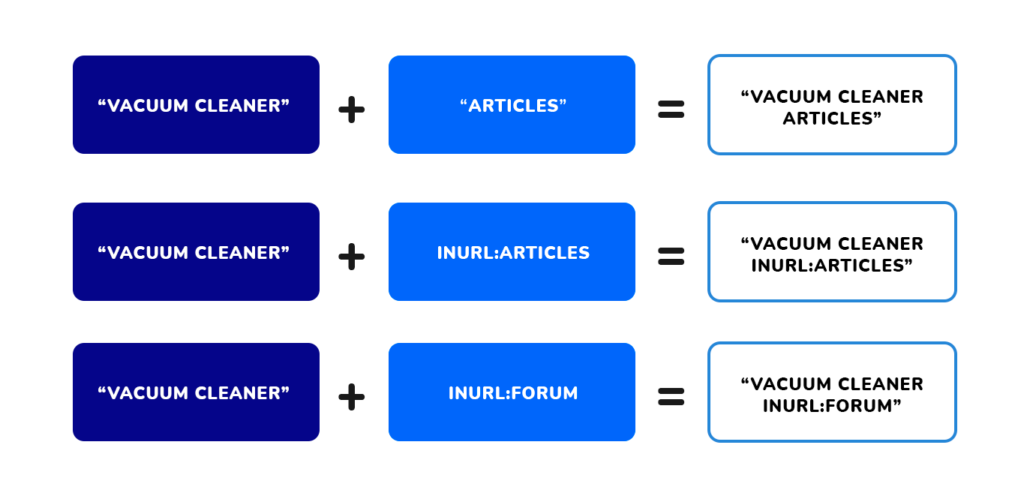If the links collected through competitive analysis are of poor quality or too expensive to place, use other methods to expand the link profile.
Building a Table of Search Queries Based on Competitors’ Link Sources
For this, take the promoted phrase, such as “vacuum cleaner,” as a base. Since one of the sources of competitors’ links is articles, add the word “articles” to the query, resulting in “vacuum cleaner articles.” You can also add the key phrase with the search operator inurl:articles, so the search will only be among pages whose URL contains the word “articles.” Similarly, you can add queries with search operators like inurl:blog, inurl:forum, etc.

Manually collecting search results for queries is labor-intensive. To save time, use services like the free parser Butterfly. It will automatically analyze the statistics for the queries and provide a list of potential donor sites for link publication.
Note the term “potential donor sites”: before agreeing on publication, assess the quality of resources and filter out the unsuitable ones. This can be done manually or with services like Serpstat, Ahrefs, Semrush, etc.
Searching by Queries
Expand the site’s link profile by searching for queries like “top 10 vacuum cleaners,” “best vacuum cleaner ratings,” etc. Review the sites where such compilations are placed and analyze their quality. If the platforms are suitable, negotiate the publication of links.
By regularly expanding the link profile in this way, you will improve the site’s ranking and its position in search results.



